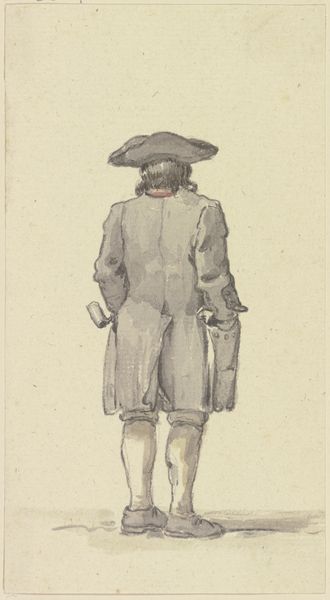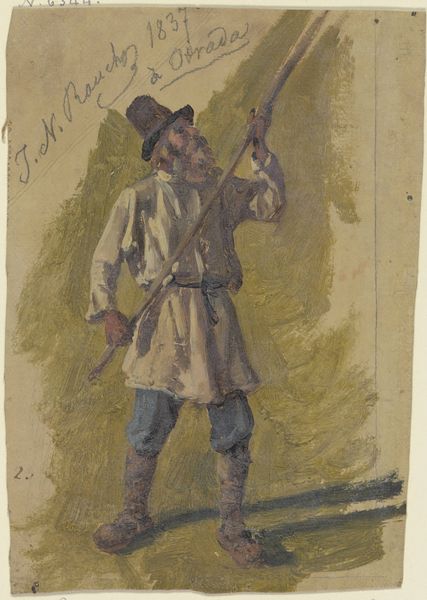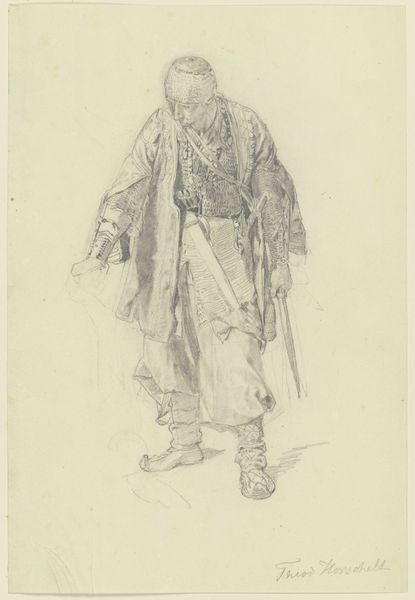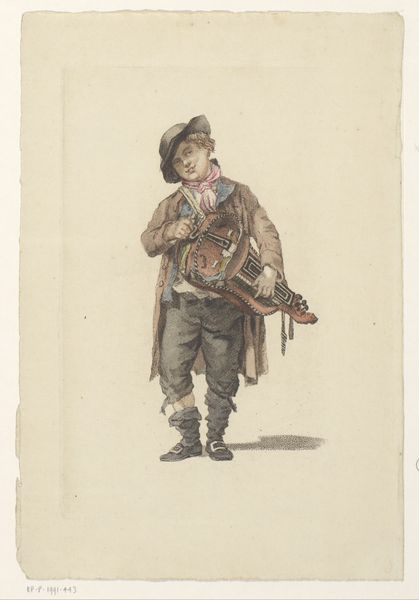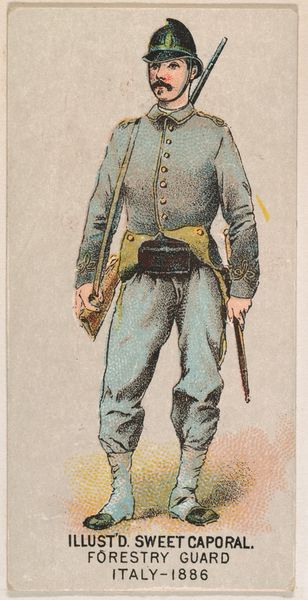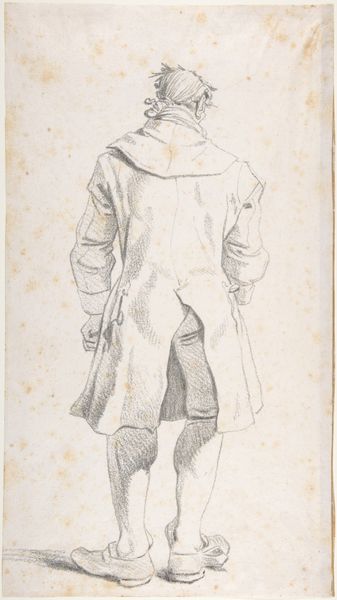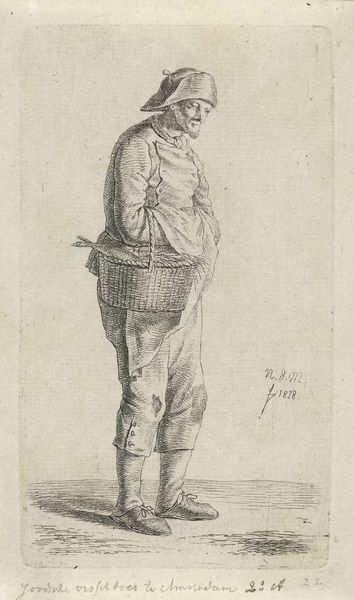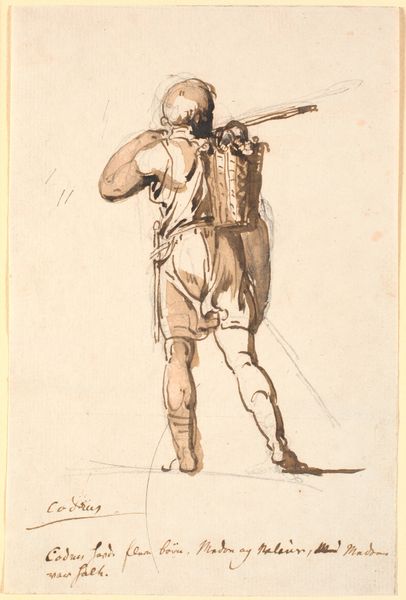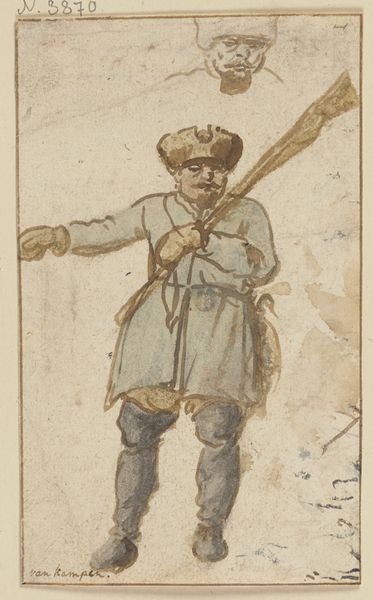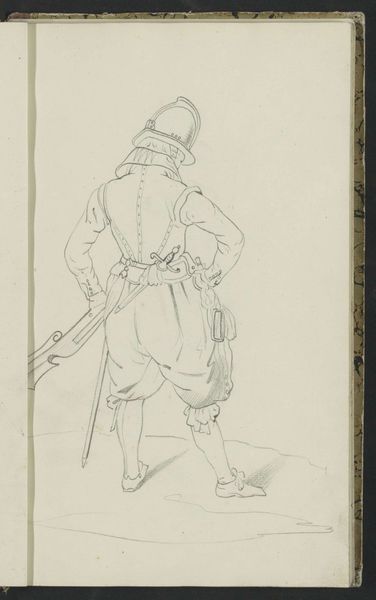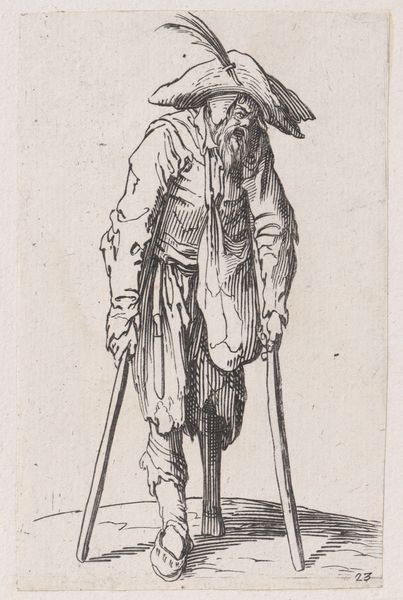
drawing, ink, pencil, chalk
#
portrait
#
drawing
#
baroque
#
ink
#
pencil
#
chalk
#
pencil work
Copyright: Public Domain
Curator: This drawing is by Roelant Savery, dating back to around 1608-1609. Titled "Woodcutter Seen from the Rear", it employs chalk, pencil, and ink. It currently resides in the Städel Museum. Editor: I’m immediately drawn to the man's solitude. The texture and detail—rendered in muted tones—somehow intensify the mood of quiet resilience in the face of hardship. Curator: That's a keen observation. Savery's attention to the woodcutter's attire isn't merely descriptive. The fur hat, the sturdy boots, and the prominent axe evoke a certain status connected to labor and identity, hinting at broader social dynamics. Editor: Absolutely, but it's more complex than that. This could represent the individual’s relationship to natural resources. In a Baroque context, where hunting rights and wood collection had sociopolitical significance, representing a woodcutter—even from the rear—could signify deeper themes of power and control. Curator: I think you are correct to interpret more deeply. What's fascinating is how a seemingly simple depiction opens up questions of societal hierarchy. Consider also the placement of the axe, like an emblem of masculine strength. Savery emphasizes it in the composition. Editor: It can also be a critique. There is potential for commentary on rural life versus the emerging mercantile economies of the Dutch Golden Age. Depicting the worker "from the rear," may symbolize a disinterest in individualism. Perhaps that serves to highlight the inherent injustices of the social hierarchy? Curator: Or the anonymity of the laborer? To consider him as emblematic of every worker, instead of identifying individual accomplishments. That speaks volumes about prevailing attitudes towards rural communities. The use of drawing in preparation for later works allowed him to represent ideas through these images. Editor: Indeed. By focusing on the worker, he underscores their essential role in shaping our cultural landscape. Seeing it within Baroque landscape traditions shifts our perception; instead of an idealistic or sublime rendering of nature, we glimpse lived reality. Curator: The figure almost seems monumental in scale, doesn't it? The effect conveys an epic importance that complicates social conventions, lending dignity to laboring figures through representational weight. Editor: A point well taken, with lasting implications!
Comments
No comments
Be the first to comment and join the conversation on the ultimate creative platform.
